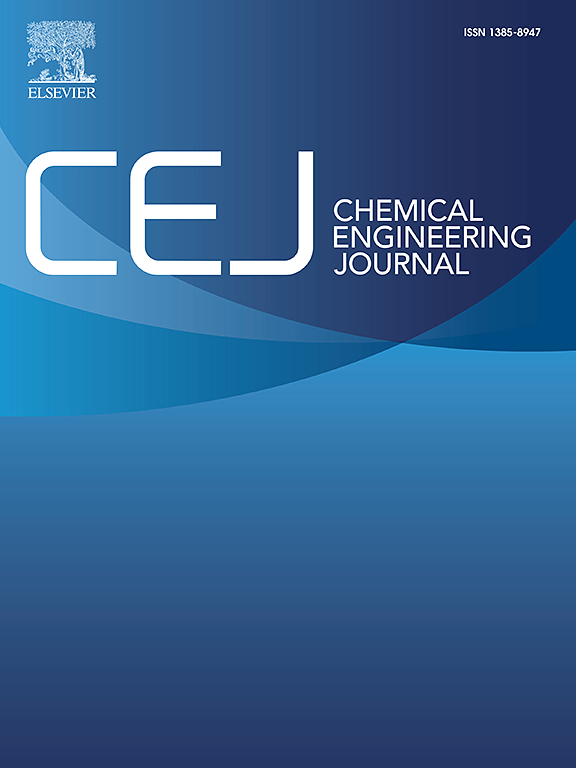The abundance of persistent free radicals in biochar determines the degradation efficiency of plasticizer DBP in soils through regulating the ROS yielding
IF 13.2
1区 工程技术
Q1 ENGINEERING, CHEMICAL
引用次数: 0
Abstract
As a typical phthalate ester (PAEs), dibutyl phthalate (DBP) is widely detected in soils globally and the ecotoxicity of DBP has gained increasing attention in recent years. This study attempts to investigate the application of biochar derived persistent free radicals (PFRs) for the remediation of soil DBP contamination. It was found that cotton stalk biochar (CBC) exhibited the highest PFRs abundance, while no significant PFRs signal was detected for biochar prepared from maize straw and sewage sludge. CBC effectively enhanced both biotic (12.8%) and abiotic degradation (28.6%) of DBP in soils. In addition, the generation of soil reactive oxygen species (ROS) under the influence of CBC-PFRs was demonstrated and the contribution of various ROS (•OH 5.1%, O2•- 8.4%, and H2O2 6.8%) to the degradation of soil DBP was quantified. These results provide a scientific evidence for the practical utilization of CBC-PFRs to control the degradation of DBP in soil.

生物炭中持久性自由基的丰度通过调控活性氧的生成来决定增塑剂DBP在土壤中的降解效率
邻苯二甲酸二丁酯(DBP)是一种典型的邻苯二甲酸酯(PAEs),在全球土壤中广泛存在,其生态毒性问题近年来越来越受到人们的关注。本研究旨在探讨生物炭衍生的持久性自由基(PFRs)在修复土壤DBP污染中的应用。结果表明,棉秆生物炭(CBC)的PFRs丰度最高,而玉米秸秆和污水污泥制备的生物炭没有检测到显著的PFRs信号。CBC有效地促进了土壤中DBP的生物降解(12.8%)和非生物降解(28.6%)。此外,研究了CBC-PFRs作用下土壤活性氧(ROS)的生成,并量化了不同活性氧(•OH 5.1%、O2•- 8.4%、H2O2 6.8%)对土壤DBP降解的贡献。这些结果为实际应用CBC-PFRs控制土壤中DBP的降解提供了科学依据。
本文章由计算机程序翻译,如有差异,请以英文原文为准。
求助全文
约1分钟内获得全文
求助全文
来源期刊

Chemical Engineering Journal
工程技术-工程:化工
CiteScore
21.70
自引率
9.30%
发文量
6781
审稿时长
2.4 months
期刊介绍:
The Chemical Engineering Journal is an international research journal that invites contributions of original and novel fundamental research. It aims to provide an international platform for presenting original fundamental research, interpretative reviews, and discussions on new developments in chemical engineering. The journal welcomes papers that describe novel theory and its practical application, as well as those that demonstrate the transfer of techniques from other disciplines. It also welcomes reports on carefully conducted experimental work that is soundly interpreted. The main focus of the journal is on original and rigorous research results that have broad significance. The Catalysis section within the Chemical Engineering Journal focuses specifically on Experimental and Theoretical studies in the fields of heterogeneous catalysis, molecular catalysis, and biocatalysis. These studies have industrial impact on various sectors such as chemicals, energy, materials, foods, healthcare, and environmental protection.
 求助内容:
求助内容: 应助结果提醒方式:
应助结果提醒方式:


